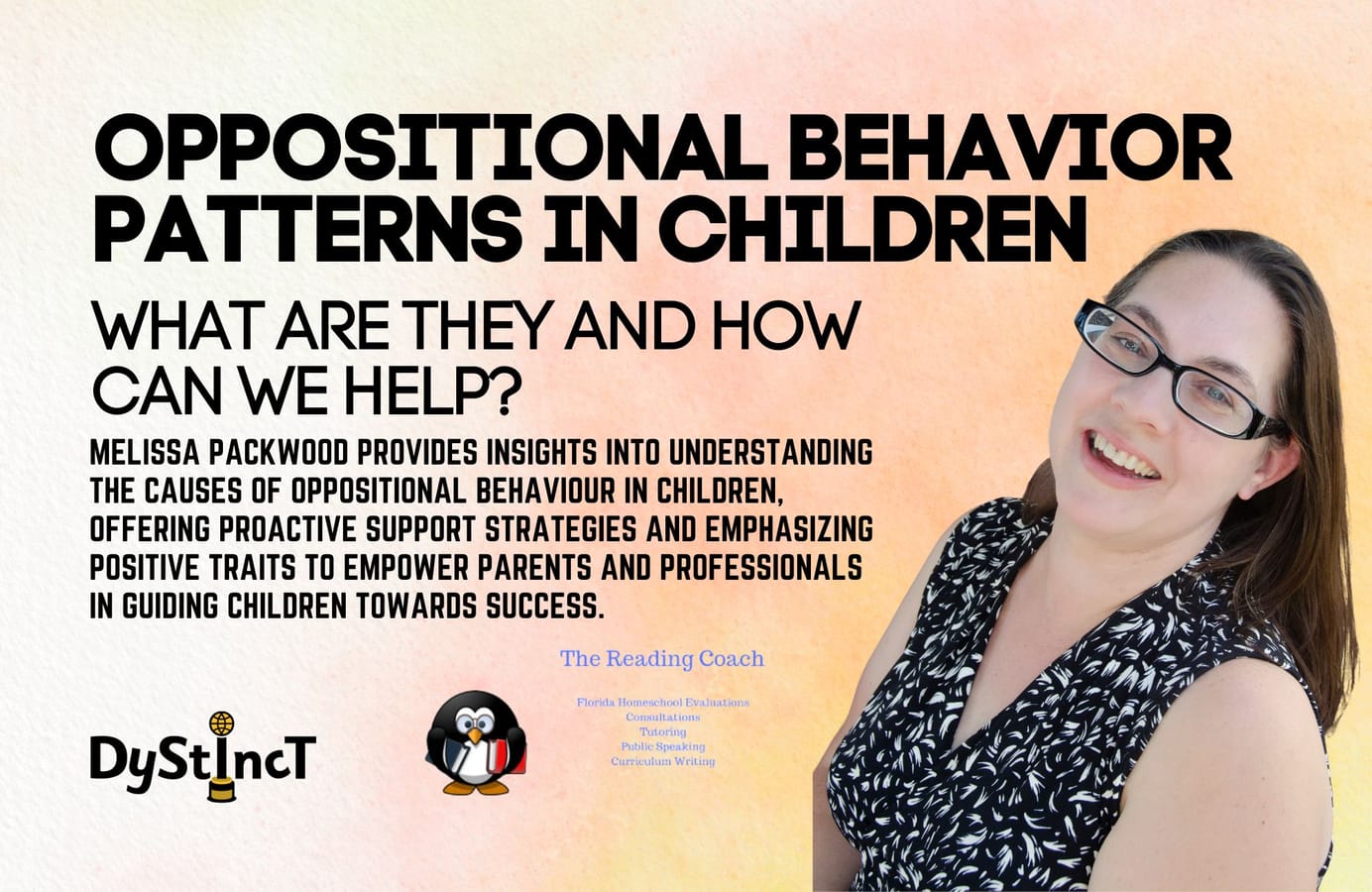
Issue 20: Oppositional Behavior Patterns in Children: What Are They and How Can We Help? Melissa Packwood
Melissa Packwood provides insights into understanding the causes of oppositional behaviour in children, offering proactive support strategies and emphasizing positive traits to empower parents and professionals in guiding children towards success.
Parents and teachers regularly deal with children's behaviors. Oftentimes, these behaviors are widely experienced and thought of as typical and are easily worked through. But what happens when behaviors form an ongoing pattern, and the strategies parents and teachers are using don't work? That's one of the most common questions parents and professionals ask.
What is Oppositional Behavior?
What is Oppositional Behavior?
Oppositional behavior is when one refuses to comply with the direction of someone who is in a position of authority or power. For example, when Ms Rudd reminds Jasper to complete his math test, he yells at her and then rips up the paper; he is showing oppositional behavior. Alternatively, when Coach Jennings tells Julie to be safe with the PE equipment, and she responds by ignoring him and walking away, she is showing oppositional behavior. When oppositional behavior becomes repetitive over time and begins to interrupt regular life on a regular basis, it may fit the diagnostic criteria for a diagnosis of Oppositional Defiant Disorder.
Oppositional Defiant Disorder is diagnosed by a professional, such as a psychologist or psychiatrist, using specific diagnostic criteria recognized in a particular country or territory. However, there are other reasons why a child may exhibit oppositional behavior patterns. For example, anxiety can cause anyone, child, or adult, to find tasks stressful, especially when these tasks feel as if they are a demand. In addition to demands placed by an authority figure, tasks or demands someone has for themselves may also cause stress. Consider Jordan's predicament. He wants to attend a birthday party for his friend but refuses to leave the house when it's time to go because he feels anxious about who will be there and the possibility of being late. He struggles to motivate himself to move beyond his stress to attend the party.
In 2003, the first academic article about Pathological Demand Avoidance, which Elizabeth Newson first identified, was published. Pathological Demand Avoidance can also result in oppositional behavior patterns and is included under the Autism umbrella as an ASD profile, which includes a large amount of anxiety. This type of neurodiversity is not yet included in all diagnostic manuals and may be diagnosed as Autism and a separate anxiety disorder in some countries. Additional reasons why oppositional behavior may occur include prior trauma, sensory processing challenges, language processing challenges, illnesses in general, and executive functioning challenges. Sometimes oppositional behavior is simply a difference in priorities, a slow processing time, or difficulty in understanding what is being communicated rather than purposeful opposition to a direction.
This post is for paying subscribers only
SubscribeAlready have an account? Log in


